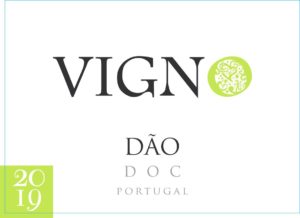December 2022 Case Club
SALEL & RENAUD Galinette – ORGANIC AND BIODYNAMIC
Vigno Dao branco – Organic
Guilhem Rosé – organic and biodynamic
duperray Gamay Glou Glou – organic and natural
Vigno Dao Tinto- Organic and Biodynamic
Scaia Rosso – Organic
Vincent Wengier Bourgogne Blanc – Organic
Bow and Arrow Chenin – Organic, Biodynamic and Natural
Ray-Jane Bandol Rosé – Organic
Javernand Macon Rouge – Organic
Succés Cuca de Llum – Organic
Un Litro- Organic and Biodynamic
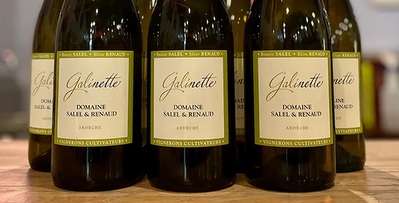 SALEL & RENAUD Galinette – ORGANIC AND BIODYNAMIC
SALEL & RENAUD Galinette – ORGANIC AND BIODYNAMIC
Salel & Renaud may be the most esoteric and “academic” of all the French growers that our new importer, Transparent, imports. For years, Elise Renaud and Benoit Salel worked in the vines and cellars under some of the biggest dogs in Cote Rotie, Hermitage, Provence, and Sancerre before starting their own farm in their native Ardèche. All wines are made by Elise Renaud; all farming is done by her husband, Benoit Salel.
The Ardèche sits on the western banks of the Rhône river and covers an important part of the northern Rhône vineyards while also bridging into the western side of the southern Rhône. Generally speaking, while the AOC-level appellations Saint-Joseph, Cornas, Saint-Peray, Côtes du Vivarais and some Côtes du Rhône vineyards are all located within this region, the IGP-level vineyards are found in the dry, scrubby foothills of the Cévennes mountains and along the river Ardèche valley. The narrow valley of the Rhône is often reserved for the more prestigious AOC wines. The department lies approximately 50km (30 miles) south of Lyon and 100km (60 miles) north of the Mediterranean, between the Rhône river to the east and the Massif Central plateau to the west.
Elise Renaud and Benoit Salel both hail from the Cevennes Ardechoises, where both of their families have tended the vine for many generations. While their elders sold all of their grapes to the local cooperative, Elise and Benoit decided to give it a go, making their own wines from their own vines. The two bought eight acres of vines in the rugged Ardeche region, and the rest is history. They have increased their holdings to 35 acres, and they have converted all of their vineyards over to organics.
Since 2007 Elise Renaud and Benoit Salel have been doing double-duty as ampelographers and archivists, working diligently to find, propagate, and replant old varieties which were once grown in the southern Ardèche. Like many of the more rural areas of France, the region’s indigenous/ancient grape varieties had long since fallen into oblivion. Along with the more familiar varieties that are found in appellations throughout the Rhône region, Elise and Benoit have patiently cultivated varieties such as Chatus, Dureza, Raisaine, and Picardan. For them, these indigenous grape varieties are the soul and identity of the Cévennes Ardéchoises. As Elise and Benoit say, “There is nothing to invent, the future is simply what has been forgotten.”
Their greatest passion is tracking down ancient, pre-phylloxera “heirloom” grape varieties in forests and long-neglected vineyards throughout the Ardèche, then propagating, replanting, and re-introducing them to modern drinkers by way of delicious wines. It’s a decade-long process not for the lazy or faint of heart, but the results are stunning: Light/medium-bodied, but hauntingly floral, meaty, and tooth-staining reds from grapes like Dureza and Chatus, plus waxy, saline, and exotically aromatic whites from the Raisaine and Picardan grapes — and we would be remiss in not mentioning their electrifying Grenache/Gamay blend “Mescladis” and gorgeously textural Roussanne/Vermentino “Galinette”. Low prices, handsome labels, attention-grabbing wines, and an exciting back-story — do not miss Salel & Renaud!
Their wines are brand new to the United States, and their La Galinette Blanc is my idea of the perfect white wine. What I like most about this wine is its elegance; White Rhones can often be a bit “clunky,” but this one is fresh, zesty, and precise. At just 12.5% alcohol, this blend of equal parts Vermentino and Roussanne shines with both Southern and Northern Rhone character. The Roussanne contributes heady scents and flavors of peach, lemon, and honeysuckle, while the Vermentino adds acidity along with notes of pink grapefruit, citrus zest, and herb. All in all, this all adds up to create a joyful and delicious drinking experience. This is a wine that would be great served with the classic Thanksgiving feast, but I don’t think we’ll have any left by the time Turkey Day gets here. Thus, enjoy now with roasted chicken and root vegetables or richer, oilier fish and seafood dishes. Or skip the food altogether and just drink this one with a good friend or loved one.
FREIRE LOBO VIGNO DAO BRANCO (ORGANIC)
Elisa Freire Lobo began her winemaking career in 1996, working and studying in the Bairrada region at Caves São João and the following year in the Douro with Anselmo Mendes. Being that she grew up in the Dão region, the oldest non-liqueur DOC in Portugal, she decided to return to her roots where she quickly became the very first woman winemaker in the region. In the ensuing years, she went on to work with many of the most respected producers of the region, including Casimiro Gomes, Carlos Rodrigues, Carlos Lucas, Alvaro Castro and the late Magalhães Coelho.
Elisa’s family has been growing grapes in the Dão for decades, so the next logical step would be to take over the family vineyards, which she did in 2010. Immediately, she began the conversion to organic farming, in order to respect the soil, plants and biodiversity of the 35 acres that she began farming. Between November and February, the vineyards are grazed by Bordaleiras sheep, which are typical of the mountainous Serra da Estrela where these vineyards lie at an elevation between 1500 and 2500 feet above sea level.
The sheep help control grass growth during wet months as well as adding essential natural fertilizer to the vineyards. Grasses and legumes are planted and encouraged the rest of the year as cover crops that improve the soil structure, increase fertility and help better manage the nutrients and limited water available in this poor, granitic soil. The cover crops stimulate biodiversity in the soil and vineyards, an essential part of long-term vineyard management. Only traditional Portuguese varietals are planted.
Reds include Touriga Nacional, Alfrocheiro, Tinta Roriz, Jaen, Alvarelhão, Baga, Bastardo, Tinto Cão, Camarate and Rufete. Whites include Encruzado, Cerceal, Bical, Fernão Pires, Malvasia and Barcelo. These are all harvested manually and some of their vineyards include ancient field blends, planted to virtually all of the above named varietals. The traditional methods of the vineyards flow directly into the winery where all fermentations are spontaneous using only indigenous yeasts.
50% Encruzado, 35% Bical, and 15% Cerceal. Encruzado has got to be my favorite Portuguese white grape these days. It’s got great structure and mouthwatering acidity for extended ageability, but fleet of foot, bursting with citrus and stone fruit flavors. Lightly creamy, fun and refreshing, with a backbone of lemon zest, pine needle, green apple, and tangy minerality. Wet slate, pomelo, pear – goes with any type of seafood.
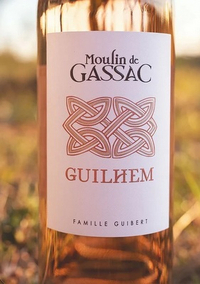 MOULIN DE GASSAC GUILHEM ROsé – ORGANIC AND BIODYNAMIC
MOULIN DE GASSAC GUILHEM ROsé – ORGANIC AND BIODYNAMIC
The producer, Mas de Daumas Gassac, has been variously described as ‘Lafite in the Languedoc’, ‘the only Grand Cru of the Midi’ and ‘exceptional’.
Several years back, the folks at Mas de Daumas Gassac began working with a neighboring cooperative in Sête to produce fun, full-flavored wines from the surrounding countryside and rocky hillsides. The goal is to produce wines grown under the strict vineyard and winemaking regimens employed at this unique domaine. Organic farming is de rigueur and the vinification is closely overseen by the Guibert family.
The results are splendidly aromatic wines that bring out the terroir of this Mediterranean region. The wines are named after St. Guilhem, the patron saint of the area where the village of St. Guilhem le Désert, one of the most stunningly beautiful villages in Europe, draws people from all over the world.
Their rosé is our best-selling rosé and perhaps our best-selling wine. It’s a blend of 50% Syrah, 50% Carignan. This delightful salmon-pink wine is produced via direct press, imparting a delicate, pale but vivid pink color. Fermented in temperature-controlled, stainless steel tanks. Aromatics of strawberries and crushed red fruit leap from the glass. In the mouth, it is fresh with excellent acidity, some mineral components, and good length. Very food friendly, it is a great companion to just about anything you want to throw at it.
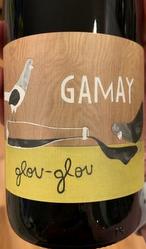 duperray Gamay Glou Glou – organic and natural
duperray Gamay Glou Glou – organic and natural
Jean-Baptiste Duperray runs his family estate and vineyards located in southern Beaujolais under the premise that the best wines are made in the vineyards. The vines are plowed to remove the weeds. In the cellar, Jean-Baptiste makes his wines without any additives — no sulfur dioxide, yeasts enzymes or other oenologic products. The wines are lightly filtered and bottled with minimal SO2 to ensure the best expression of terroir. He farms his land sustainably in order to ensure the purest expressions of varietal and terroir in his finished wines. Hand-harvested grapes are placed whole cluster in concrete tanks, where they undergo 8 months of natural carbonic maceration. The wine undergoes spontaneous fermentation on the skins, before being lightly racked.
Ripe and vibrant on the nose, with raspberry, bubblegum and cola notes mixing with some underbrush and earth. The palate is juicy and mouthfilling, but balanced by lively acidity. The red fruits are sweet and sour, but there are earthy, mushroom notes as well.
Glou-Glou” means “glug glug” which is both a motto for this wine and a call to action. Serve lightly chilled and don’t overthink the pairings here. Glou Glou is an expression given to a wine that is supremely drinkable: And Jean-Baptiste’s Glou Glou is drinkability incarnate. Made from 100% Gamay fermented whole-cluster in cement. Light purple color with expressive aromas of cherry, strawberry and a light note of spice. The palate is light and refreshing with soft tannins and vibrant acidity. Perfect for a picnic, light dinner or evening with friends.
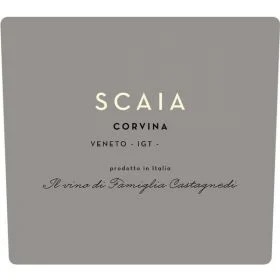 Scaia Rosso – Organic
Scaia Rosso – Organic
Scaia is a project of Tenuta Sant’Antonio in the Veneto, makers of wonderful Valoplicella, Ripasso and Amarone.
This family estate belongs to the four Castagnedi brothers—Armando, Paolo, Tiziano and Massimo. From a long family of grapegrowers, the siblings came together in 1989 to create their own estate winery. They planted 72 acres of vines on Monte Garbi, a rocky, chalky mountain that’s challenging to farm but that produces intense, uniquely flavored grapes.
While most Veneto bottlings come from large companies that buy fruit and juice from all over, the Castagnedis source fruit only from their parents’ vineyard and from their own low-yielding vines, which are handpicked (another rarity in the Veneto). All of the Scaia wines are single varietal, made from organically farmed grapes, and packaged in a unique (and reusable) glass cork closure.
Scaia Rosso is 100% Corvina, one of three red varieties native to Italy’s northeast Veneto region that provide the basis for three very different wines: bold, complex Amarone; juicy, mediumbodied Valpolicella; and lighter Bardolino. In the last century, industrialization took over much of Veneto’s vineyards; quality went down as yields, aided by chemical fertilizers and mass processing, went up. In the last few decades, a counter movement, led mostly by small, quality focused vintners has taken hold. This is a succulent, medium-bodied Italian red that’s ridiculously easy to drink. It’s fresh and supple, with plump cherry flavors edged in spicy and herbal notes that recall white pepper and rosemary.
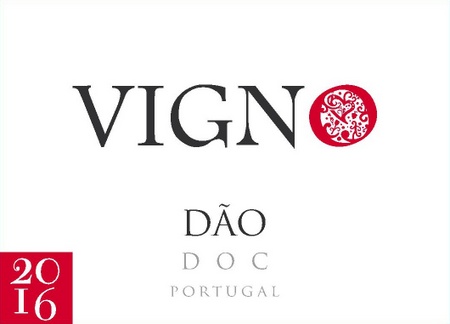 FREIRE LOBO VIGNO DAO TINTO -ORGANIC, BIODYNAMIC
FREIRE LOBO VIGNO DAO TINTO -ORGANIC, BIODYNAMIC
Elisa Freire Lobo began her winemaking career in 1996, working and studying in the Bairrada region at Caves São João and the following year in the Douro with Anselmo Mendes. Being that she grew up in the Dão region, the oldest non-liqueur DOC in Portugal, she decided to return to her roots where she quickly became the very first woman winemaker in the region. In the ensuing years, she went on to work with many of the most respected producers of the region, including Casimiro Gomes, Carlos Rodrigues, Carlos Lucas, Alvaro Castro and the late Magalhães Coelho.
Elisa’s family has been growing grapes in the Dão for decades, so the next logical step would be to take over the family vineyards, which she did in 2010. Immediately, she began the conversion to organic farming, in order to respect the soil, plants and biodiversity of the 35 acres that she began farming. Between November and February, the vineyards are grazed by Bordaleiras sheep, which are typical of the mountainous Serra da Estrela where these vineyards lie at an elevation between 1500 and 2500 feet above sea level.
The sheep help control grass growth during wet months as well as adding essential natural fertilizer to the vineyards. Grasses and legumes are planted and encouraged the rest of the year as cover crops that improve the soil structure, increase fertility and help better manage the nutrients and limited water available in this poor, granitic soil. The cover crops stimulate biodiversity in the soil and vineyards, an essential part of long-term vineyard management. Only traditional Portuguese varietals are planted.
Reds include Touriga Nacional, Alfrocheiro, Tinta Roriz, Jaen, Alvarelhão, Baga, Bastardo, Tinto Cão, Camarate and Rufete. Whites include Encruzado, Cerceal, Bical, Fernão Pires, Malvasia and Barcelo. These are all harvested manually and some of their vineyards include ancient field blends, planted to virtually all of the above named varietals. The traditional methods of the vineyards flow directly into the winery where all fermentations are spontaneous using only indigenous yeasts.
90 points, Wine Enthusiast: Fermented in open top tanks with foot treading, the wine is dense and concentrated. It has a plummy character that gives an open texture and richness. Acidity and tannins at the end are now balanced and the wine is ready to drink.
40% Touriga Nacional, 30% Jaen (Mencia), and 30% Alfrocheiro.
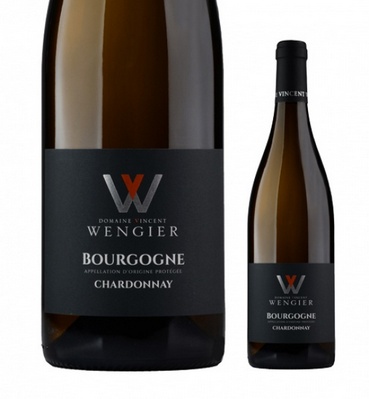 Vincent Wengier Bourgogne Blanc – Organic
Vincent Wengier Bourgogne Blanc – Organic
Domaine Vincent Wengier is located in Préhy, on the left bank of the Serein, in the southwestern part of Chablis.
Vincent is the third generation to farm this land, but the first to bottle his own wines.
From the Bourgogne Aligoté, through the Chardonnay, and into the Chablis, the wines from Vincent Wengier are full of tension and energy. Wengier’s winemaking style prefers no oak and prolonged aging on the lees in stainless steel, this gives the fruit-forward wines a beautiful texture and savory complexity that keeps you coming back to your glass. The Chablis comes from the estate’s 35-year-old vines which are planted on the region’s revered Kimmeridgian soils and the wine is embellished with a driving mineral backbone that lifts the fruit and lingers so cleanly.
Since taking over from his parents in 1998, he has transitioned to organic farming while doubling his vineyard size from 29 to over 65 acres.
He’s a new player in Chablis who is making wines worth talking about. After selling grapes to négotiants for 20 years, he started his own label in 2018, following his “passion to make wine and talk about my wine.”
The Bourgogne Blanc comes from vines located in the village of Prehy with a combination of Kimmeridgian and Portlandian terroirs, and offers bright hints of verbena, minerals, citrus and flint. There was a ton of volume in this 2020 compared to the much leaner 2021, and this is in the perfect drinking window.
Alcoholic and malolactic fermentation in stainless steel. Maturation on the fine lees for one year before bottling. Bright gold color. On the nose, white peach, citrus, lime, blossom, and almonds. The generous palate is fresh, yet rich, full, and vibrant. Drinks way over its price point.
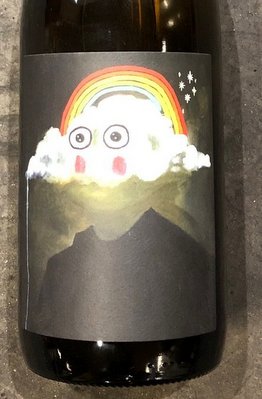 Bow and Arrow Chenin Blanc – Organic, Biodynamic and Low Intervention
Bow and Arrow Chenin Blanc – Organic, Biodynamic and Low Intervention
The husband and wife team behind Bow & Arrow started their urban winery in northeast Portland, OR in 2010. A full fledged, subterranean winery, Bow & Arrow pays homage to the refreshing and decidedly working class wines of France’s Loire Valley with interpretations on varieties like Melon, Chenin Blanc, and Gamay; that had been grown in the Willamette Valley for years.
Both Scott and Dana have worked multiple roles throughout the wine industry: Scott previously worked as a wine retail buyer as well as an assistant winemaker at Cameron Winery in the Dundee Hills, while Dana held numerous restaurant jobs in both the back and front-of-house. Inspired by vignerons like Didier Barouillet of Clos Roche Blanche (who was an over-the-phone consultant on the project), Thierry Puzelat, and Marc Ollivier of Domaine de la Pépière, Dana and Scott set out to turn Oregon’s “Pinotstocracy” on its head.
Fruit is sourced from some of the best cool-climate, organic or biodynamic vineyards around the Willamette Valley, and the work in the cellar is completely natural. The result is a set of serious, well-crafted, food-friendly, affordable wines that are a true homage to the Loire.
Scott & Dana Frank work with farmers who are inclined to take risks, like planting the varieties they were searching for, and who have forward-thinking mentalities when it comes to farming organically and biodynamically. Over the course of their partnership, many of the farmers have become certified. Fermentations always occur naturally and fining, filtration, and sulfur additions are thoughtful if any.
Winery notes:2020 Chenin Blanc is 100% sourced from Union School Vineyard, the same place we get the Sauvignon Blanc for Fool’s Gold. I traveled to Matthew Rorick’s Heritage Vineyard a few years back and collected cuttings from his Chenin block after finding a grower willing to graft for me. The site is perfect for SB and Chenin – slightly warmer, good drainage, crotchety old German at the helm… I ripen till the fruit turns yellow and speckled like a bird’s egg and then direct press to large 500-liter casks for fermentation and aging. The elevage ranges from 12 to 18 months. The goal is to make a dry but extracted expression more akin to Savennière rather than say a Vouvray Sec.
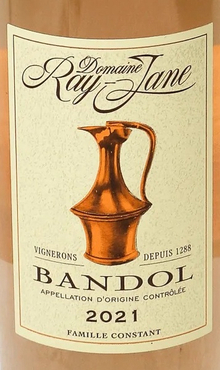 Domaine ray-jane bandol rosé – organic
Domaine ray-jane bandol rosé – organic
Just a half a mile south of Domaine Tempier lies Domaine Ray-Jane, one of the most traditional producers in the Bandol AOC. Jane and Alain Constant own the estate, which has been in their families since 1288. The winery is certified organic, and their wines are in the same league as Tempier and Pradeaux.
The vineyards spread over 64 acres in the terroirs of Le Castellet and La Cadière. The newly upgraded cellar is equipped with the latest technology (thermoregulated stainless steel tanks for maceration, automatic system for pumping over the red Bandol.
Alain’s father Raymond had a passion for all things used for winemaking (tools for vineyard management, barrel-making, and winemaking) and a small museum lies on the property where a unique collection of over 20,000 tools is displayed.
A third of the vines are 100 years old and planted on Restanques (terraces made of stones carved into the hills to prevent erosion and facilitate the natural distribution of water resources). The work in the vineyard is done without motorized tools (plowing is done with horses and hoe). Harvest is manual. Certified Organic
As Bandol Rose should be, this is a much more powerful and structured wine with gorgeous notes of red berries, flowers, and minerals.
Delicious now, this is a wine that will continue to offer great drinking over the next 5 to 7 years. This is not “just a rosé.” Rather, it is a remarkably serious wine that is built to evolve and improve in a way that many regional, built-for-immediate-consumption peers would surely fail. It’s a wine whose sophistication and objectively topflight quality belies its playful complexion and extremely modest price tag. And of course, that tension, structure, and unrelenting freshness is precisely the backbone that earns this wine a renowned reputation for extended cellar aging. Believe me, when this bottle hits the 3-5 year “sweet spot,” it will blossom into an exotically textured, richly aromatic, and fascinatingly savory second life. But we’d be remiss if I didn’t urge you to drink a few right now: This is so creamy and lifted with high, sonorous notes of ripe citrus fruit, wild strawberry, crushed cherries, redcurrant, grapefruit pith, tangelo peel, and crushed rock. It’s bountifully layered and refreshing to the point where you must constantly remind yourself to slow your pace to truly enjoy each nuance.
Mourvedre 40%, Grenache 30%, Cinsault 30% Judged Best Rosé in the World by Decanter Magazine
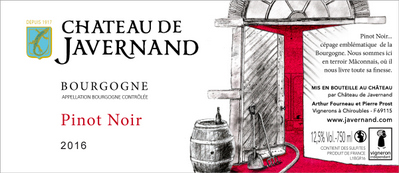 Javernand Macon Rouge – Organic and Biodynamic
Javernand Macon Rouge – Organic and Biodynamic
Importer notes: “The Chateau de Javernand – a small castle with almost 50 hectares of vines – has been continuously producing wine since the 1700’s. Arthur Fourneau and his good friend, Pierre Prost, farm organically and bottle benchmark Chiroubles (the highest altitude of all the Beaujolais crus, and historically home to the region’s “freshest” reds) from what is broadly considered to be one of the appellation’s top sites, planted on poor, sandy, granite slopes. The pair also produce exceptional Pinot Noir and Chardonnay from their small farmstead in the Mâcon. Arthur’s great-grandfather purchased Javernand in 1917, after visiting and falling in love with the Château and surrounding vines. Arthur, the fifth generation, and Pierre were both sons of winemakers who met at school in Lyon. They became fast friends and Pierre eventually married Arthur’s cousin, Mathilde, and joined the estate in 2011 before moving to Macon to supervise Pinot Noir and Chardonnay growing/winemaking. It’s a family affair.”
“I think the thing that is most interesting about Javernand is that it is home to a lot of superlatives (which, as with everything in the wine world, must be taken with a grain of salt): This domaine is commonly referenced as the oldest continually producing estate in the Cru Beaujolais. I’ve been told it’s the steepest vineyard in the Cru Beaujolais. I’ve been told it’s the highest-elevation vineyard in the Crus Beaujolais and so on and so forth. The vast majority of what Javernand does is elegant, perfumed, lip electrifyingly lip-smacking Gamay from the village of Chiroubles.”
“BUT…as mentioned above, they also have a tiny, tiny planting of old vine Chardonnay and Pinot Noir in the village of Macon. This Pinot Noir comes from that vineyard: all hand harvested, certified organic grapes, everything is fermented in large, neutral French oak Burgundy barrels and then aged for 10 months before further aging in bottle. It’s a mix of 30% whole clusters with stems + 70% de-stemmed fruit. The result is a Pinot Noir bursting with raspberry and cherry fruit, delicate floral and forest aromas, and a general sense of levity and fun without sacrificing any sophistication. It’s a great “drink now” red Burgundy – and because it’s Burgundian Pinot Noir, you should make an effort to empty the bottle within 18 hours of drinking it. Pinot Noir has especially delicate aromas and, for me, the best examples always expire quickly after the cork is pulled. In addition to immediate enjoyment, this bottle will easily improve for 2-4 years if stored in a cool, dark, and stable corner of the garage. The bright fruit and white flowers of today will morph into more exotic mushroom/potpourri/savory aromatics as the wine evolves, but it will remain an ideal companion to roasted salmon, mushroom risotto, or pork chops.”
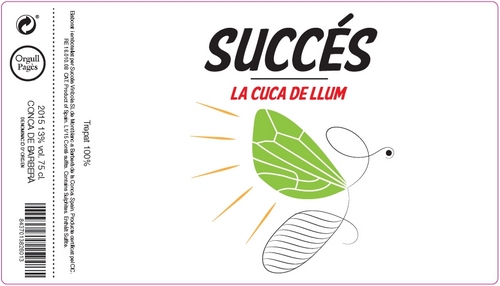 Succés La Cuca de Llum – Organic and Natural
Succés La Cuca de Llum – Organic and Natural
Mariona Vendrell and Albert Canela fell in love studying winemaking in Tarragona and started Succés Vinícola in 2011 at the tender age of 20. They exploded onto the scene with a still red wine made with Conca de Barberà’s favorite grape, Trepat, which was traditionally used in the region’s rosé Cava and first vinified tinto only a decade ago. Parellada, traditionally blended in Cava and grown best at Conca’s high altitudes, is also uncommon and exciting as still wine. Albert’s family has grown vines in the area for generations, and he uses his family’s connections to source Succés’ fruit from older, organically farmed vineyards owned by local abuelos.
The Conca de Barbera DO is in Southern Catalonia – about an hour and a half by car, west of Barcelona. Conca de Barberà is a Spanish Denominación de Origen (DO) for wines located in central Catalonia in the north of the province of Tarragona in the valleys of the rivers Francolí and Anguera. This is foothill country and the higher altitudes lead to cooler temperatures and later grape harvests.
Most of the vines are on dark lime-bearing soils, quite loose and poor in organic matter. The traditional grapes used are Macabeo and Parellada for white wines and cava, and Garnacha, Trepat and Tempranillo (known locally as Ull de Llebre) for red wines. However, the Regulatory Council of the DO has also authorized some foreign varieties: Cabernet Sauvignon, Merlot, Pinot Noir, Syrah, and Chardonnay. White varieties represent about two-thirds of the vines planted.
There are only 3,700 acres of Trepat in Spain and most of it is in this little area centered around the town of Montblanc. It’s believed that the Phoenicians brought Trepat to this region. The grape itself is quite unique. It was only used to make rosé and sparkling wine until recently. The first known commercial attempt to make red wine wasn’t until about ten years ago.
As a red wine, Trepat tends to give wines that are medium-bodied but fruity and with tons of character. They taste like a beefier version of Pinot Noir, Schiava or Gamay. Trepat produces light-bodied, aromatic reds reminiscent of Jura reds.
20-50 year old vines planted at 1600 feet above sea level. Native yeast fermentation, farming practices beyond Organic (a true hands-off, almost Permaculture approach to wine grape growing). Thirty day skin contact, aged five months in tank on the fine lees, and bottled with minimal traces of SO2 . Unoaked, unfiltered, unadulterated.
The hipster wine geeks out there call this style of wine glou glou, or in English, a very quaffable, simple, easy-to-love glass of wine. Cuca de Llum Succes Trepat is fresh and delicate, with dusty tannins, and notes of dried flowers, fresh cherries, herbs, and minerals. Think unoaked Pinot Noir meets Barbera, but fresher.
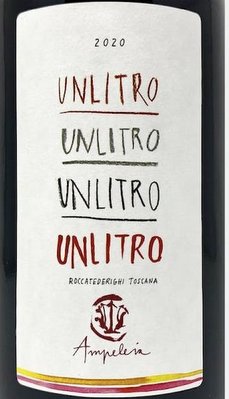 Ampeleia Un Litro – Biodynamic, Organic
Ampeleia Un Litro – Biodynamic, Organic
Elisabetta Foradori is one of the world’s great winemakers; she runs two wineries, her eponymous one in the Dolomites, where she singlehandedly from the age of 19 revived the almost extinct grape Teroldego; and Ampeleia, her coastal Tuscan winery, where she works with grapes mostly associated with the Rhône Valley and Spain (Grenache, Mourvèdre, Alicante Bouschet, Carignan, etc).
At both wineries she follows meticulous organic viticultural practices, and tends to let the grapes speak for themselves, without a lot of oak to muddy up the flavors.
“Ampeleia is one of the stars of the Tuscan coast…..At their best, the Ampeleia wines are among the most pure, transparent expressions of the coast readers will find. Elisabetta Foradori and her team are doing important work here. Ampeleia is a young estate. There is every reason to believe the best is yet to come.” —Antonio Galloni, Vinous
Ampeleia was born in 2002 from the collaboration and friendship between Elisabetta Foradori, Thomas Widmann, and Giovanni Podini; they saw in Ampeleia a place where they could not only develop an agricultural project but also fulfill a common vision. The project aspires to represent the inherent diversity and huge potential of this particular area of Maremma, the “Colline Metallifere,” which are not the coastal lowlands one usually associates with the Maremma, but mineral-rich hills that have been mined since Etruscan times.
The estate results from the purchase of different plots of land, located far apart and on different altitude levels, with the precise aim of creating a great variability in altitude, soil type and microclimatic conditions; each vineyard has a distinctive identity that is enhanced by the uniqueness of the surrounding environment. Variety is the keystone and soul of Ampeleia. In fact, variety represents the project’s constant quality, both physically and symbolically, and is harmoniously expressed in its wines that taste of the varied lands of the area around the village of Roccatederighi. Many of the grape varieties that have been planted in Ampeleia are common in Mediterranean farmlands. In past times, vineyards were not planted with just one grape variety but many types of grapes were present and they were all harvested at the same time; the vineyards at Ampeleia reflect this tradition.
Un Litro is a blend of “Mediterranean basin varietals” this vintage is a blend of Grenache, Carignan, and Alicante Bouschet from the coastal Maremma district of Tuscany, packaged up in a fun squat bottle.
The varieties were harvested and vinified separately. A small part of the harvest undergoes carbonic maceration, the rest is either done whole berry or crushed. Spontaneous natural yeast fermentations. Aged six months in cement tanks.
Vineyards are certified organic, practicing Biodynamic. Unlitro is meant to be a young and elegant quaffable wine. Slightly built but finely toned, the body of this wine is deceptively taut, its grippy texture belying its soft fruitiness, its light color, and of course the playfulness of the packaging.


